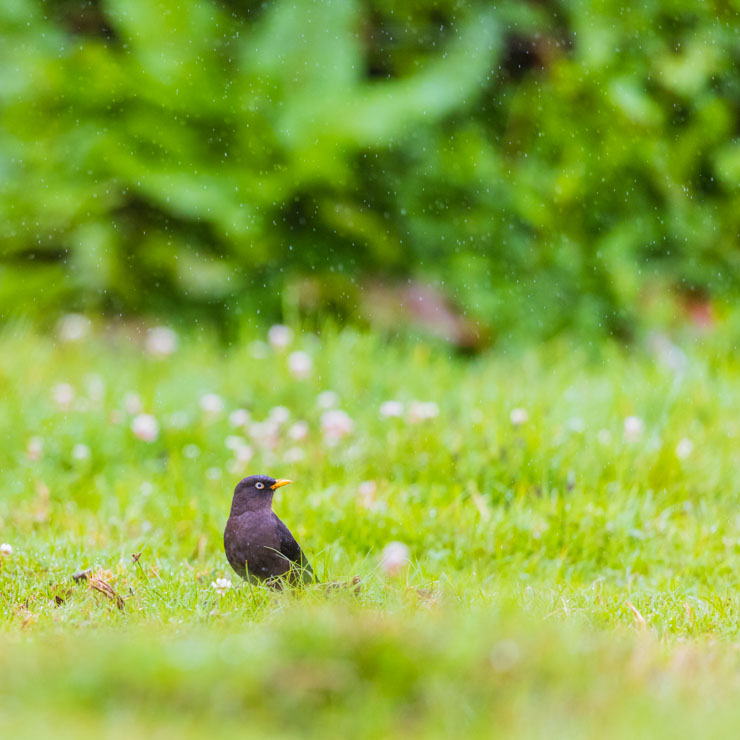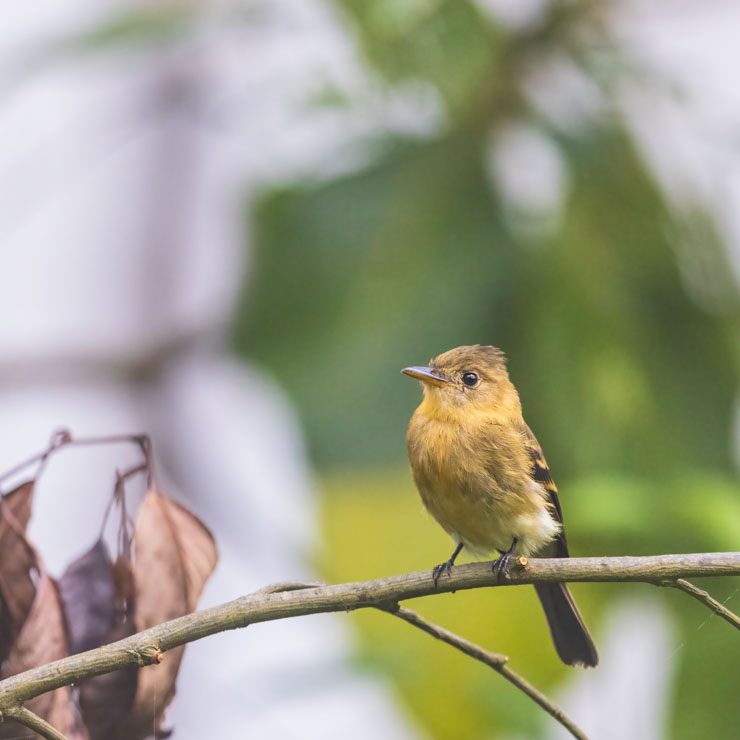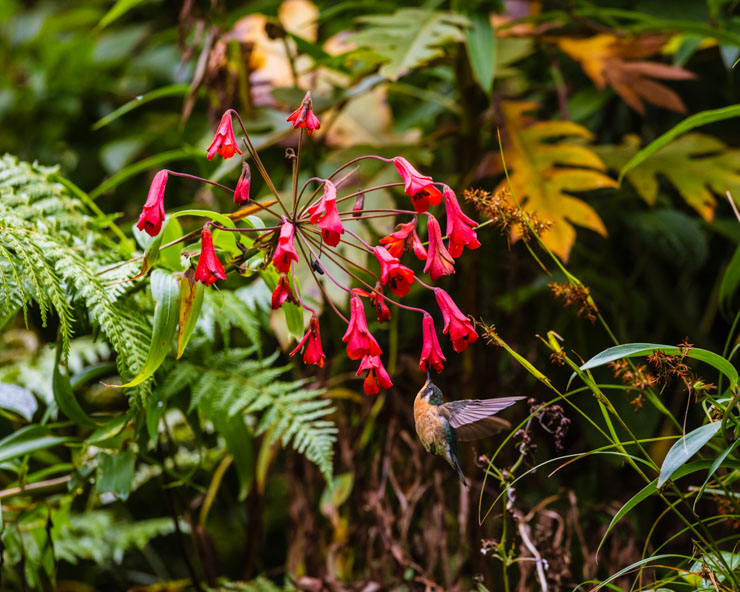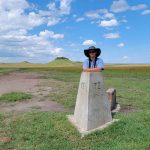
One’s reaction to information is based almost entirely on the knowledge base that opinions are drawn from. Given this fact, reactions can easily differ if this knowledge base is continually growing. This has been made stark by comparing how I felt when I first heard of the prospect of birding the slopes of Turrialba Volcano to today, as I pen this article. Let me explain.
I have a long-standing infatuation with mountains. Visible from a distance with distinct biodiversity and most importantly cool air, I remain for the most part blissfully ignorant of the cornucopia of dangers that accompany this sort of terrain. Sitting around the table in the lobby of Rancho Naturalista with Nikky and Harry, we discussed our plans for my time there. On the cards was a visit to Turrialba Volcano, and I drooled at the prospect of birding a couple thousand metres above sea level. Gnarled and stunted branches laden with all manners of moss and lichen beckoned.
As much as I tried to dull my expectations – my typical modus operandi is to erase them altogether – my mind kept me busy on the drive out of the lodge. In the darkness of the pre-dawn I had a blank canvas upon which those perfect photographs began to materialise. Ultimately these visages vaporised as slivers of pink and orange began to course their way across the sky. Finally, I knew where east was. Stopping briefly for Meche to graciously grab me a cup of pure – and positively delicious – Costa Rican coffee, I got a chance to look at the resident Great-tailed Grackles as they argued on the still-dark pavement. Then, we began the gradually intensifying ascent.

I’m no landscape photographer, but we absolutely had to stop for this jaw-dropper of a vista.
Our next stop was to grab a photo of the sign that said “Turrialba Volcano” with the actual volcano in the background – but we were interrupted by a fabulous male Volcano Hummingbird that was perched nearby.

Volcano Hummingbird
Birds were aplenty from this initial stop, including Sooty Thrush and Rufous-collared Sparrow. Several others zoomed past and although both experienced guides Harry and Meche knew what they were, I couldn’t count those as any notable sightings on my part.

Sooty Thrush is range-restricted and caused considerable excitement.

Rufous-collared Sparrow on a suitably adorned perch.
We made many stops as we continued our ascent into the clouds – there was absolutely no doubt that we were in the cloud forest as many times we were completely encased in dense mist. Despite the seemingly friendly conditions, we had to continually deliberately keep hydrated as dehydration can easily creep up on the unaware. It was understandably difficult to have breakfast comfortably, as there was always some bird that would momentarily materialise and cause all parties to decide between shoving the remainder of their sandwich back in the bag or down the throat. Whether it was a nesting Volcano Hummingbird cleverly concealed (I don’t know how Meche found this) or an uncommonly seen Ochraceous Pewee, I smiled with the understanding that it was exactly as I had hoped it would be.
The handy thing about flycatchers is that they often make very short flights in search of their preferred flying insect prey. The flutter of wings at the corner of my eye drew my attention to a Dark Pewee, a bird I would have been woefully incapable of identifying without the intervention of my guides.

Dark Pewee

Boreal migrants were also starting to appear in greater numbers. We saw Summer Tanagers in many places, but strangely only females.

Wilson’s Warbler, another visitor from the north.

I added several Catharus thrushes to the life list I don’t keep including two more nightingale-thrushes – the first of which was this Black-billed Nightingale-Thrush.
There were a number of soot-inspired birds in the highlands, I realised. A Sooty-capped Chlorospingus gave us good views. While I was trying to get a photo of the Chlorospingus, a Slaty Flowerpiercer foraged within a nearby thicket. I got a glimpse eventually, but did not manage a reasonable photo until later in the day. There were more Sooty Thrushes on show as waves of clouds continued to hold and release us, as well as a few Black-capped Flycatchers.

Sooty-capped Chlorospingus

Black-capped Flycatcher
A distant movement turned out to be the near-endemic costaricensis subspecies of Red-tailed Hawk, a much closer movement was in fact not a mouse but a female Slaty Flowerpiercer.

Slaty Flowerpiercer

Seeing a bird like this Blue-crowned Chlorophonia felt like picking out a highlighter in a box of charcoal pencils.
A short distance down the road led us to where the Red-tailed Hawk had perched. As it preened, a Fiery-throated Hummingbird buzzed it briefly. The hawk did not seem to be bothered by the hummingbird, the latter did not waste much time on it and moved off after a few seconds. Or maybe the hummingbird saw an incoming cloud rolling in, as it soon became impossible to see the raptor on the perch from where we were.

Red-tailed Hawk
We made a brief stop just after cresting the hill at just over 2,600m above sea level where a hummingbird feeder attracted several species of these real-life fairies: from the tiny Volcano Hummingbird to the much larger Lesser Violetear and Fiery-throated Hummingbird. Overseeing them all was a pair of Talamanca Hummingbirds. Sadly, the weather conditions meant that visibility was at best only a few metres so we opted to curtail our stay here in favour of heading down the mountain.

Lesser Violetear

Fiery-throated Hummingbird

Talamanca Hummingbird
We weren’t yet out of earshot of this place when Harry spotted a roadside Ochraceous Pewee that caused our vehicle to come to a screeching halt. With good reason, too, as our initial sighting earlier that morning had been of a distant bird on a wire.

Ochraceous Pewee
At another stop, still hopeful for any sighting of a Resplendent Quetzal, we scanned the dense, moss-laden vegetation for any faint glint of emerald. We remained without luck in this department, but as the optimist in me always says, must leave something for another time. However, I did manage a look at a pair of Black Guans that were moving through the canopy. Again, just as the clouds were rolling in.

I then caught a glimpse of the second of the day’s two nightingale-thrushes, this Ruddy-capped Nightingale-Thrush that eventually popped out onto the road.
The descent was effortless, a contrast to the constant drone of the engine that was pushing us up the mountain earlier in the day. As we rolled on in search of cloudless forest (aka a place to bird where one can see into the trees) we scanned the vegetation for any sign of movement. Sometimes, we’d find something and stop to have the clouds roll in after a few seconds, but other times we were afforded more time. Minutes, even. At one point while we were enjoying some frenetic activity in a thicket the clouds actually parted and the sun showed itself for the first time since the previous day. At that moment I became painfully aware of the time. Judging from how much my skin was suddenly stinging, it was very close to midday.
Nevertheless, the birds were still incredible. This flurry of activity was made apparent by the flitting around of a Collared Redstart, but upon closer inspection there was also a group of Yellow-thighed Brushfinches moving around within the vines. Add to this both Black-cheeked and Flame-throated Warblers, a Ruddy Treerunner, and a Purple-throated Mountain-gem and I was appropriately overwhelmed.

Collared Redstart

Yellow-thighed Brushfinch

Black-cheeked Warbler

Flame-throated Warbler

Ruddy Treerunner (it was both bright and dark at the same time, photographers will understand)

Purple-throated Mountain-gem

I managed to catch another Slaty Flowerpiercer in the mix as well.

Further down the road, we came upon yet another pewee, and unsurprisingly one which I was unsure of. This one turned out to be a Western Wood-Pewee, as evidenced by its mostly dark bill.
By this point, we were made aware of the time by another factor – that of hunger. Gradually, human habitation began to be more apparent as we descended. Driving through the clouds was an otherworldly experience, as there was no indication whatsoever of what was beyond the white wall. Oftentimes, a lone giant tree would suddenly heave into view, a reminder of the dense forest that once populated the area. Now, agriculture dominates the lower slopes; these isolated trees were somehow spared the axe.
Today, as I began preparing this post, I decided to search for more information on Turrialbla Volcano. The wikipedia page commenced in dramatic fashion: “Turrialba Volcano is an active volcano in central Costa Rica that has been explosively eruptive in recent years…“
Had I been aware of this before, perhaps my reaction would have been a bit different. Would I have gone still? Absolutely.













I wanted to ask (before I read the post): is it an active volcano? A mountain with a temper… Like you, all thoughts of lava and magma disappeared because of the birds. That Fiery-throated Hummingbird… wow.
Cheers, Peter!